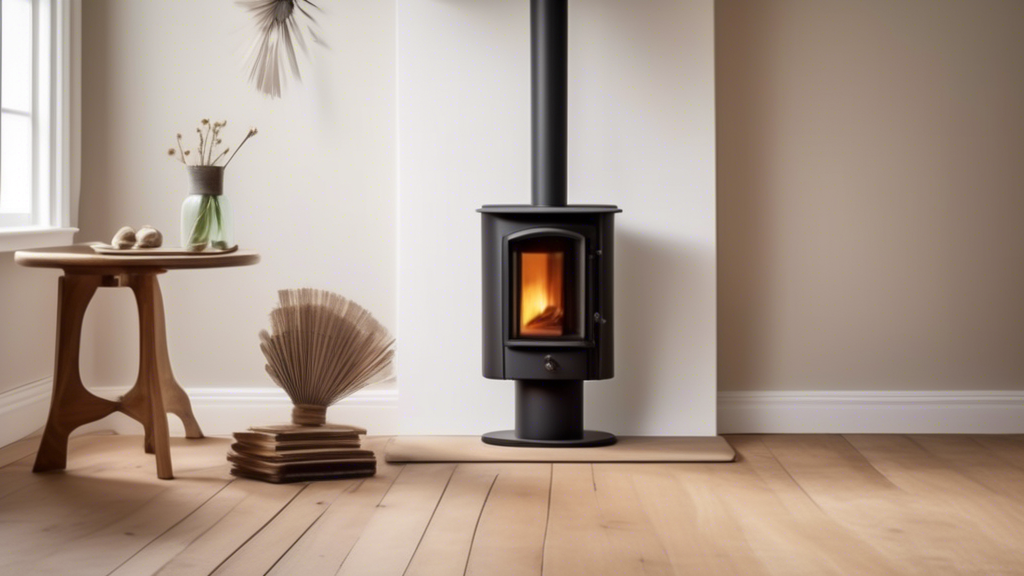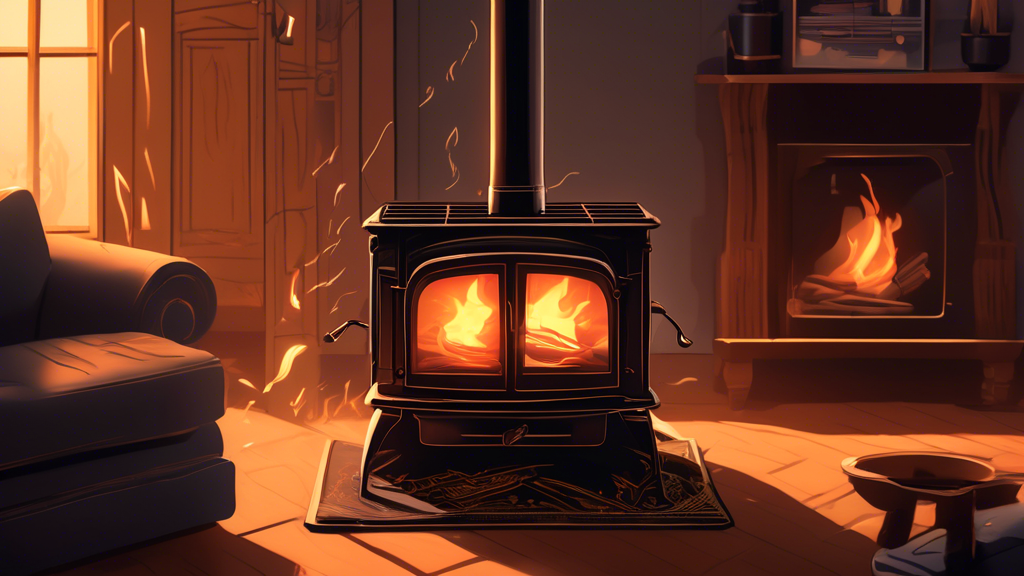Understanding How Wood Burning Stove Fans Work
If you’ve ever cozied up to the warmth of a crackling wood stove on a cold winter’s night, you know there’s nothing quite like it. But while your toes are toasty, you might have noticed that some corners of the room stay as chilly as your granny’s love for technology. This is where the unsung hero of home heating comes in—the wood burning stove fan. These nifty gadgets are designed to take the heat that piles up on and around your stove and push it across the room, so every nook and cranny can enjoy the warmth, essentially turning your cozy spot into a homemade sauna, but less sweaty.
Understanding how wood burning stove fans work is the key to unlocking their full potential—and let’s face it, we all like to feel like we’re getting our money’s worth. By getting to grips with these fans, you can enhance your heating efficiency, save on energy bills, and, most importantly, keep those distant armchairs as snug as the one near the fireplace. It’s like having a little helper that doesn’t ask for coffee breaks or make weird noises at three in the morning.
So grab your hot cocoa, pull up a chair—right in front of your newly distributed heat, of course—and let’s dive into the surprisingly fascinating world of wood burning stove fans, where thermal energy is the name of the game, and electricity takes a well-deserved day off.
Introduction to Wood Burning Stove Fans
Ah, the cozy allure of a wood-burning stove. Picture this: an evening where the outside world is covered in a picturesque blanket of white, and you’re nestled in front of your wood-burning stove, sipping a hot cup of cocoa. But wait! Is your trusty stove using its heat efficiently? Enter the wood-burning stove fan—a marvelous invention that not only cranks up the snug factor but also optimizes the stove’s heating efficiency to keep those toes toasty without breaking the bank on firewood.
Wood-burning stove fans might just look like an extra gizmo stuck atop your stove, but these little wonders serve a crucial role. Their primary mission? To enhance the heating efficiency of your wood-burning stove. They work tirelessly to ensure that the warm air doesn’t just lazily linger around the stove itself, but gets distributed evenly across your room. Say goodbye to frozen extremities and hello to an evenly warmed space that would make even Goldilocks say, Ah, just right. But hey, to truly appreciate the magic these fans weave, it’s pivotal to understand how do wood burning stove fans work.
So, why is it important to comprehend the workings of these fans? In two words: energy savings. When you grasp how these fans operate, you can optimize their use to eke out the maximum efficiency possible from your wood-burning stove. You’ll be spending less on fuel while enjoying a perfectly heated home. It’s a bit like discovering the magic trick behind your favorite illusion; once you know it, you can do it yourself and revel in better results.
No need to run for the hills if you’re a beginner. We promise there’s no pop quiz at the end of this. Our friendly community is here to guide you through the ins and outs, and hey, even seasoned woodworkers might learn a thing or two. After all, as any experienced woodworker can tell you, there are always new tricks waiting to be unearthed from the workshop of life.
The world of wood-burning stove fans is a glorious testament to the ingenuity of engineering. Think of these fans as the unsung heroes, dispersing heat with the grace of a ballet dancer pirouetting across a stage. You don’t need to be Einstein to appreciate the genius behind them, but understanding the principles can really help you cheer these devices along as they dutifully perform their job.
Whether you’re equipped with a high-tech thermometer or simply trust your well-seasoned fingertips to detect the nuances of the perfect room temperature, understanding the workings of wood-burning stove fans can empower you to create the coziest of retreats. And if you happen to hit a snag (because life’s more comedy than documentary), remember: Even the straightest planks can veer off course, but with a little patience and some friendly guidance, you’ll soon be steering your way back to comfort city.
So, when your neighbor, who just happens to invite himself over for coffee, asks you, Say, how do those nifty wood burning stove fans work?—you’ll not only have an answer, but you’ll also be able to demonstrate it like the pro you’re fast becoming. Here’s to unlocking the secrets of the stove fan and reveling in the heat of newfound knowledge!
Click Here For The World’s Largest Collection of 16,000 Woodworking Plans

Mechanisms and Functionality of Wood Burning Stove Fans
Ever found yourself gazing at your wood-burning stove fan and wondering, “How do wood burning stove fans work?” Imagine your stove fan as a mini magician sitting atop your wood stove, conjuring warmth and comfort without so much as a cord or a plug. Yes, it’s like those self-stirring mugs but for heat distribution! The secret sauce? It’s all about thermal energy conversion, fan blade operation, and a sprinkle of solid engineering that doesn’t require the electric company’s signature on your bill. I’m here to help you unravel this cozy mystery.
Thermoelectric Technology: Using Heat to Kickstart the Fan
First on the magic carpet ride is thermoelectric technology. Think about it like a party where heat is the host, and the fan is the life of the bash. When you pop the fan on top of the stove, the base of the fan absorbs the heat, essentially inviting it to the shindig. Enter the hero of our story: the thermoelectric module. This little gadget is made of two different types of semiconductors joined at the base of the fan. Exciting, right?
As the base gets hotter from the stove below and the top stays cooler thanks to the air above, a voltage is created across the semiconductors—just like when you finally realize which way to hold your half-inch chisel. This voltage generates electrical energy that drives the fan motor, causing the fan blades to spin faster than your dog when someone mentions “walk.” Just like that, heat distribution happens without a single leap to the socket. Thermoelectric technology might sound complex, but it’s like convincing your kids to do chores: it’s all about leverage!
Stirling Engines: A 19th-Century Gentleman in Modern Times
Bear with me, as we lift the curtain on yet another amazing guest: the Stirling engine. If you’re anything like me during a tricky dovetail joint, you might need a bit of patience with this one, but trust me, it’s worth it. Picture the Stirling engine as a gracious ballroom dancer that found its steps in the 1800s and decided to wow the modern world with a different kind of performance—distributing heat.
Here’s how it works: the engine uses air or another gas that expands and contracts in a closed loop within the fan. A chamber at the bottom of the fan heats up from your stove, causing the gas within to expand. Meanwhile, a cold chamber at the top lets the gas contract. This rhythmic dance of expansion and contraction moves a piston which then spins the fan blades. This is not unlike the back-and-forth negotiation involved in letting the kids have dessert before dinner.
The beauty of the Stirling engine fan is that you get consistent, whisper-quiet heat distribution, all while contemplating what in the world you’d do without the inspiration of the past enlightening our present comfort.
Fan Blades: Dancing to the Thermal Beat
Let’s not forget the nostalgic beat of the blade operation. It’s quite simple, really. The blades are cleverly angled, so when the thermoelectric or Stirling mechanism gets them whirling, they grab onto the ambient air, pushing and pulling it across your homestead like a seasoned line dancer corralling the crowd. The idea is that as the fan spins, it keeps that precious warmth from staying huddled up near the stove and instead struts about the room, making even the corners feel cozy.
When Things Go Awry: Lessons from a Sawdust-Covered Journeyman
Now, I’ll be the first to admit that things can sometimes go awry. Take, for example, the incident where my rather ambitious attempt to “improve” my own stove fan left it on a table rather than keeping it aligned on the stove. Seems precision matters outside of dovetail joint-making too, who knew! Just a reminder, your wood-burning fan relies on consistent heat from your stove to keep the mechanisms tinkering away. Keep it central, keep it non-fussy.
When your stove fan gives you the silent treatment, fear not! Double-check that it’s properly sitting on a hot surface and that you haven’t unwittingly positioned it in a cooler spot. Make sure those blades aren’t tangled in anything that should be scribbled into a workshop comedy sketch rather than real life. Most importantly, remember that imperfection is just part and parcel of the DIY journey, kind of like how I keep mistaking pine for maple when polishing.
Fan-tastic Tips for New and Experienced Woodworkers
If you want to dive into the deep end with advanced tools, perhaps replicating thermoelectricity isn’t on the agenda, but mastering the art of joining is a close second. For those embracing simplicity with a beginner’s spirit, rest assured: Non-wobbly blades and a stable base placement are your best friends. Always remember that your fan is in essence a tool as valuable in your home heating toolbox as your trusty old saw is out in the shop.
So, as you cozy up next to that evenly heated room, just remember, understanding how do wood burning stove fans work is less about wizardry and more about careful engineering. But hey, a little enchantment doesn’t hurt when it results in a warm, welcoming environment. Is your fan up and spinning yet? Here’s to your warmth-driven adventures, my fellow wood aficionados! 🌲🔥
As we draw our exploration of wood burning stove fans to a close, we’ve journeyed through the fascinating world of these unsung heroes of home heating. These fans, without wires trailing across your floor or batteries to recharge, might seem like a touch of wizardry, but as we’ve learned, it’s all about clever engineering harnessing the warmth from your stove. Understanding how do wood burning stove fans work isn’t just a curious endeavor—it’s a path to maximizing the coziness of your home while trimming down your energy bills.
By tapping into the magic of thermoelectric technology or the cunning of a Stirling engine, these fans transform the heat rising from your stove into a gentle breeze that sweeps warmth throughout your room. No power cords, no fuss—just a bit of temperature trickery that gets the job done with gusto. It’s like having a silent partner in your quest for the perfect winter sanctuary, working tirelessly while you enjoy the fruits of its labor from your favorite armchair.
For those keen to enjoy a more efficient heating experience, the knowledge we’ve shared here empowers you to pick the right wood burning stove fan that fits your needs. Whether you’re rooting for the gizmos of thermoelectric science or the mechanical marvels of Stirling engines, you now have a deeper appreciation for the intricate dance these devices perform to keep your toes toasty and your space snug.
So next time you light a fire, take a moment to nod in acknowledgment to the compact contraption perched upon your wood stove. The science behind it might be complex, but the result is beautifully simple—pure, even, and energy-efficient heat. And remember, understanding your stove fan isn’t just about knowing the mechanics; it’s about mastering the art of warm, welcoming homes.
Click Here For The World’s Largest Collection of 16,000 Woodworking Plans

